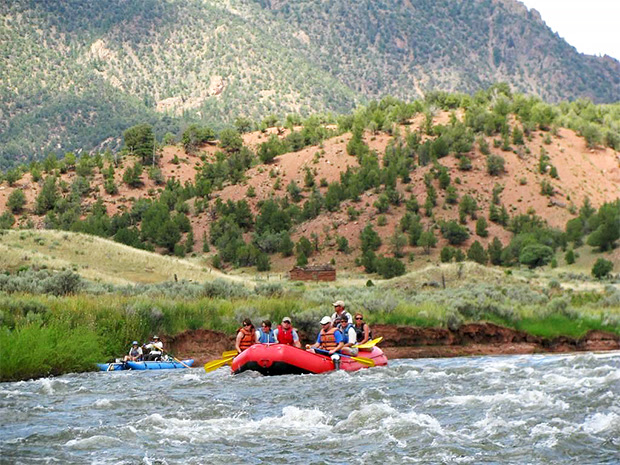Widgetized Section
Go to Admin » Appearance » Widgets » and move Gabfire Widget: Social into that MastheadOverlay zone
First-ever Colorado ‘excessive heat warning’ issued for sizzling, parched Western Slope

The National Weather Service in Grand Junction says that it has issued Colorado’s first-ever “excessive heat warning” as a heat wave descends on Colorado this week, with forecasts calling for record-high temperatures across parts of the Western Slope.
The NWS warning extends across much of Utah and portions of northern Arizona and western Colorado, including parts of Garfield, Mesa, Montrose, San Miguel and Dolores counties, and will remain in effect until midnight Friday night. Excessive heat warnings are issued when an area is forecast to experience a heat index of 105 degrees Fahrenheit or higher for more than three hours per day for two consecutive days, levels which “significantly increase the potential for heat related illnesses.”
Moab is indeed in an excessive heat warning, along with other portions of Eastern Utah and Western Colorado. A high of 106F is about 15 degrees above normal, and one degree above the record high for June 14th, which was set in 1974. Temps like these are more common in mid-July pic.twitter.com/SoJFhV4Zef
— NWS Grand Junction (@NWSGJT) June 14, 2021
“Drink plenty of fluids, stay in an air-conditioned room, stay out of the sun, and check up on relatives and neighbors,” the NWS advised residents in an urgent message issued Monday. “Take extra precautions if you work or spend time outside. When possible reschedule strenuous activities to early morning or evening.”
Highs are expected to reach 107 degrees Fahrenheit in Grand Junction on Tuesday and Wednesday, according to NWS forecasts, which would exceed the city’s all-time record high of 106 F, set on July 21, 2005. The forecast highs are more than 15 degrees higher than the 30-year average daily high of 90 F recorded between June 16 and 18 from 1981 to 2010, according to NWS data.
Studies have shown that the area affected by this week’s excessive heat warning is one of the fastest-warming regions of the continental United States, as average global temperatures continue to rise due to the emission of heat-trapping gases into the atmosphere. Historical weather records for Mesa County maintained by the National Oceanic and Atmospheric Administration show that average annual temperatures have risen by more than 4.3 F since 1895, according to data analyzed by the Washington Post.
Editor’s note: This story first appeared on Colorado Newsline, which is part of States Newsroom, a network of news outlets supported by grants and a coalition of donors as a 501c(3) public charity. Colorado Newsline maintains editorial independence. Contact Editor Quentin Young for questions: info@coloradonewsline.com. Follow Colorado Newsline on Facebook and Twitter.


